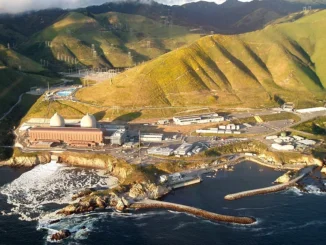
Every year, the California Legislature passes blank bills.
Twenty, 30, even 40 pieces of blank legislation are introduced, each with a bill number, each completely empty of language except for a single line expressing the intent of the Legislature to fill them in later with something related to the budget.
These blank “budget” bills go through all the required legislative steps intended to enable thoughtful consideration and transparency and then they are brought to the floor, passed, and sent to the other house. It’s a pantomime.
The state’s entire budget process is mostly theater, because the real budget is negotiated behind closed doors by the governor and legislative leaders. That’s when backroom deals become “amendments” to the blank bills. These “budget trailer bills” nearly break the sound barrier as they fly through the Legislature and land on the governor’s desk, and by the time you find out what’s in them, it’s too late.
And that is how the state passed a law mandating electricity charges based on income.
Many people were stunned at the news that the state’s three largest investor-owned utilities, Southern California Edison, Pacific Gas & Electric and San Diego Gas & Electric, had asked the California Public Utilities Commission to approve a new rate structure that would bill customers a fixed charge for electricity based on their income, in addition to charging them for the electricity they used.
The utilities didn’t really have a choice. State law now requires “the fixed charge to be established on an income-graduated basis, as provided …”
The new state law is Assembly Bill 205. It was first introduced on Jan. 8, 2021, completely blank except for one 18-word sentence that read, “It is the intent of the Legislature to enact statutory changes related to the Budget Act of 2021.” About seven weeks later, the Assembly passed the blank bill by a vote of 56 to 18 and sent it to the Senate, where it sat quietly for more than a year.
On June 26, 2022, AB 205 was amended in the Senate. The “amendment” to the 18-word bill was 21,627 words long. It added new sections to the Government Code, the Public Resources Code, the Public Utilities Code, the Revenue and Taxation Code and the Water Code.
On June 27, AB 205 passed the Senate Budget and Fiscal Review Committee. On June 29 it was approved by the full Senate, 27 to 8. It was sent over to the Assembly the same day for “concurrence in Senate Amendments,” which it received by a vote of 64 to 13. The governor signed AB 205, now known as “the energy trailer bill,” on June 30. It took effect immediately.
The income-based electricity charges appear to be the latest effort to deal with the problems caused by the pretense that the state of California can run entirely on renewable energy, as defined. It’s defined to mandate solar and wind power and to exclude nuclear power and large hydroelectric plants.
Just as the biggest cost of owning an electric car is the second vehicle you need for when you really have to be somewhere, the cost of relying on renewable (as defined) energy includes the cost of maintaining the aging gas-powered generating plants needed to keep the lights on. Check it out for yourself on the “Today’s Outlook” page of the California Independent System Operator (CAISO.com) website. On Thursday afternoon at 2 p.m., even with the sun shining, 21.8% of the electricity used statewide was generated with natural gas. The night before, at about midnight, natural gas was providing 40.7% of the state’s electricity.
In May 2021, the California Public Utilities Commission issued a report titled, “Utility Costs and Affordability of the Grid in the Future.” It states that investor-owned utilities will have to make “capital investments” which are “necessary to meet California’s energy and climate policy goals,” but noted that these “can result in higher bills for customers.” Here’s the short version of the 153-page report: rates are going higher. Californians already pay some of the highest electricity rates in the country, a thorny problem for state officials pushing residents to buy electric vehicles and toss out their gas appliances because, climate change.
The solution pushed by groups including the Natural Resources Defense Council was a new rate structure that tries to separate “volumetric” charges for energy use from “fixed” charges for infrastructure costs. The idea is to charge an income-based fixed charge to cover the costs of infrastructure, climate investments and general operation, and then cut the rates for the electricity that’s actually used. Lower rates, the theory goes, will encourage all Californians to buy new electric appliances and electric cars.
Income-based tiers are supposed to make it “equitable,” but increasing the fixed charge could mean the total bill paid by many, if not most, customers will eventually be higher than what they’re paying now, especially if they don’t use very much electricity.
An “expert blog” on the NRDC website explained in February that in the past, “encouraging conservation was a primary goal of rate design.” No longer. Now the plan is to encourage consumption through lower rates for usage, while imposing a higher fixed charge to make up the difference. Conveniently, AB 205 also removed the existing cap on fixed charges.
This is all blithering idiocy because the state doesn’t produce as much electricity as it needs. California imports more electricity than any other state, utilities run public service announcements telling people to turn off their appliances at 4 p.m., and every heat wave risks rolling blackouts.
California’s new policy is to simultaneously encourage more electricity use and less electricity use.
It might have been helpful if everyone could have looked at this proposed change during AB 205’s long path through the Legislature. Unfortunately, only a psychic can see the writing on a blank piece of paper.
Write Susan@SusanShelley.com and follow her on Twitter @Susan_Shelley



